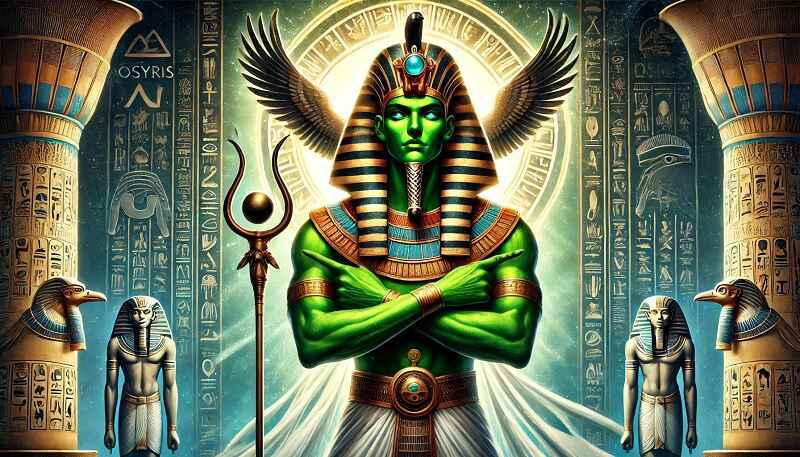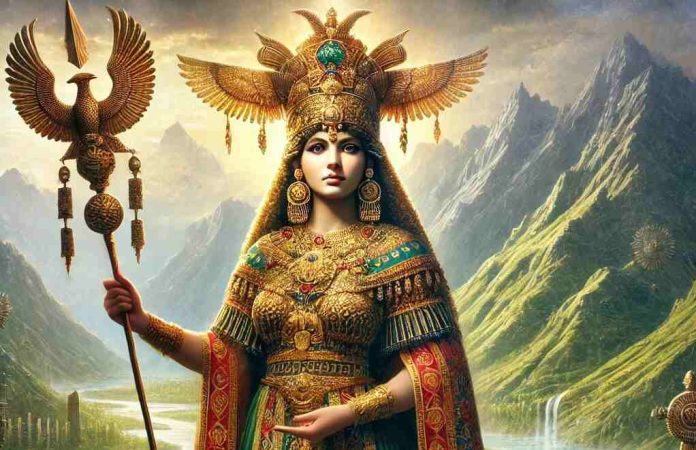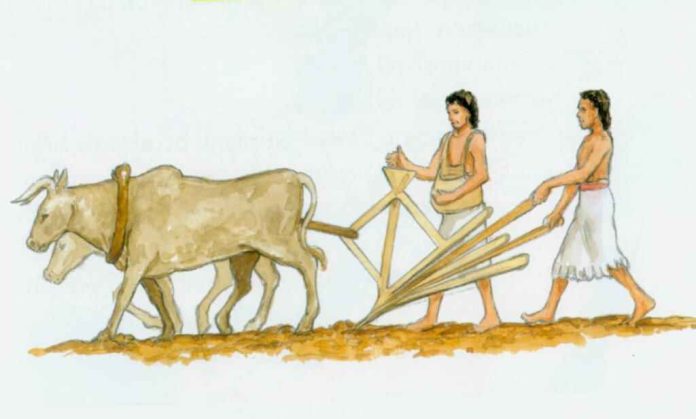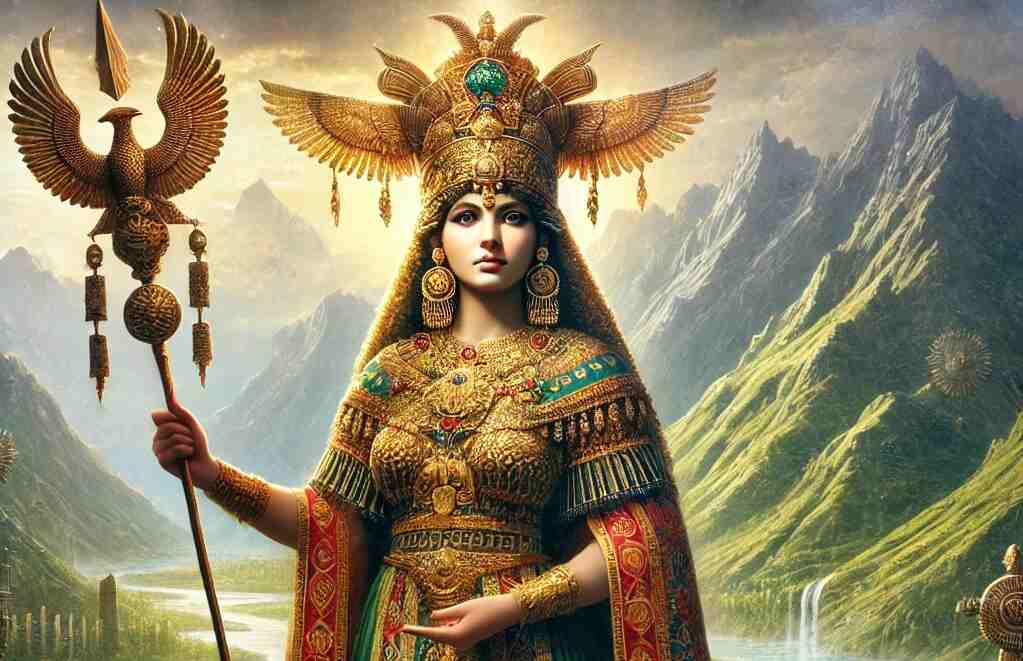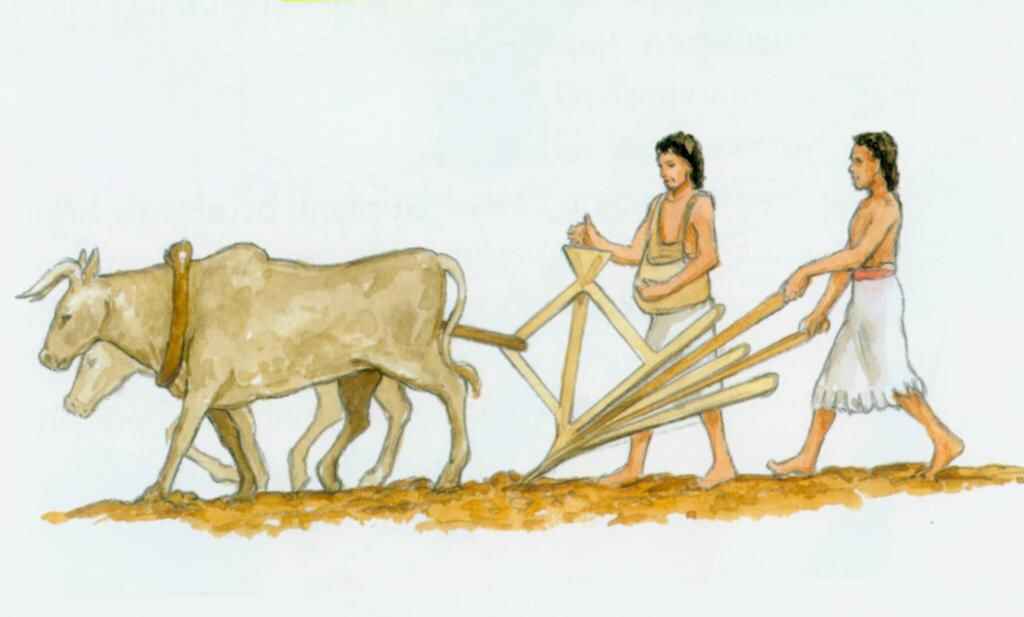In the pantheon of ancient Egyptian deities, few figures command as much reverence and intrigue as Osiris. Regarded as the god of the afterlife, resurrection, and fertility, Osiris is central to Egyptian mythology and religious practice. His tale, rich with themes of life, death, and rebirth, has captivated scholars and enthusiasts alike.
Yet, despite the extensive documentation and analysis of his cult, many aspects of Osiris remain shrouded in mystery. This article delves into what we know about Osiris, explores the enduring mysteries surrounding him, and examines the theories that have been proposed to explain these enigmatic aspects.
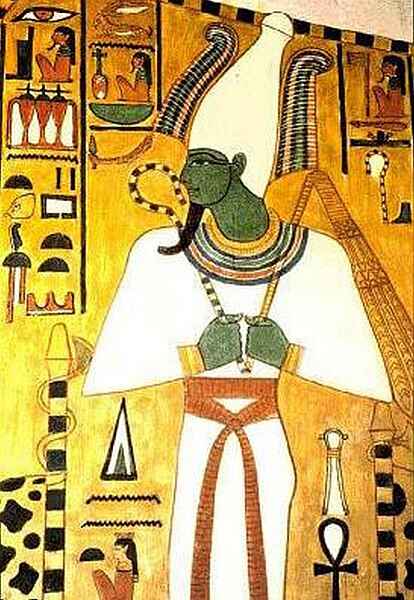
What We Know: The Established Facts
Osiris, often depicted as a mummified figure with green skin, a pharaonic beard, and a tall crown adorned with ostrich feathers, is one of the most important deities in ancient Egyptian religion. His name, derived from the Egyptian “Usir,” is commonly interpreted as “Powerful” or “Mighty,” reflecting his supreme status among the gods. Osiris’s primary role was that of the ruler of the underworld and the judge of the dead. His jurisdiction was the Duat, the Egyptian afterlife, where souls were judged based on their deeds in life.
Origins and Mythology
Osiris’s mythological narrative is one of the most well-preserved in Egyptian lore. According to legend, Osiris was the son of Geb (the earth god) and Nut (the sky goddess), and he was married to his sister Isis, another prominent deity. Osiris is said to have been a benevolent king of Egypt, who taught humanity agriculture, law, and civilization. His reign was one of prosperity and order, but it was cut short by the jealousy of his brother Seth.
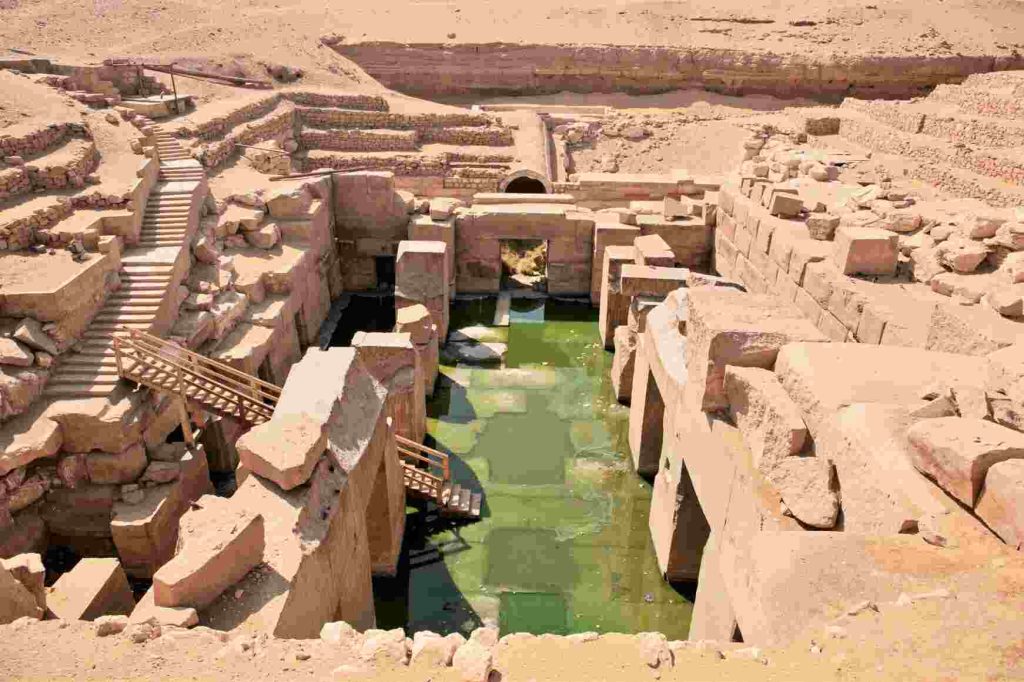
Seth, driven by envy, conspired to murder Osiris. He tricked Osiris into laying down in a coffin, which he then sealed and threw into the Nile. The coffin floated down the river and eventually became embedded in a tree. When Isis discovered Osiris’s fate, she searched tirelessly for his body, eventually finding it and bringing it back to Egypt.
However, Seth discovered the body and, in a fit of rage, dismembered it into fourteen pieces, scattering them across the land. Undeterred, Isis, with the help of her sister Nephthys and the god Anubis, managed to recover all the pieces except one—the phallus, which was devoured by a fish. Through her magical powers, Isis reassembled Osiris’s body and resurrected him long enough to conceive their son, Horus.
Osiris’s Role in the Afterlife
After his resurrection, Osiris did not return to the living world. Instead, he became the lord of the afterlife, where he presided over the weighing of the heart ceremony, a critical component of the Egyptian belief in the afterlife. In this ceremony, the heart of the deceased was weighed against the feather of Ma’at, the goddess of truth. If the heart was lighter or equal in weight to the feather, the soul was deemed worthy of entering the afterlife. If not, it was devoured by Ammit, a fearsome creature that was part lion, hippopotamus, and crocodile.
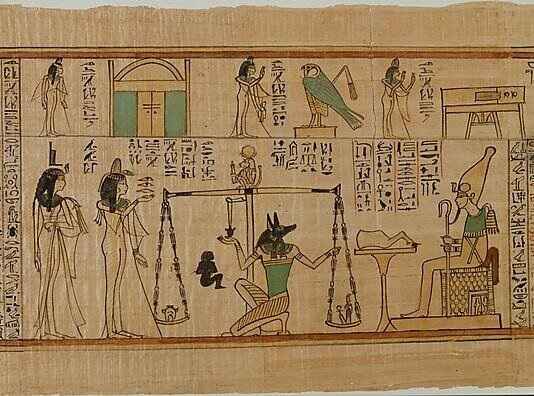
The significance of Osiris extended beyond the afterlife. As the god of resurrection, Osiris was also associated with the annual flooding of the Nile, which was seen as a symbol of renewal and fertility. The green color of his skin represents vegetation and rebirth, further cementing his connection to life and regeneration.
The Unsolved Mysteries of Osiris
Despite the wealth of information available about Osiris, several aspects of his mythology and worship remain enigmatic. One of the most enduring mysteries is the exact location of Osiris’s tomb. Ancient texts, such as the Pyramid Texts and the Book of the Dead, frequently refer to a burial site for Osiris, often associating it with the city of Abydos, one of the most important religious centers in Egypt. However, the actual physical location of Osiris’s tomb has never been conclusively identified.
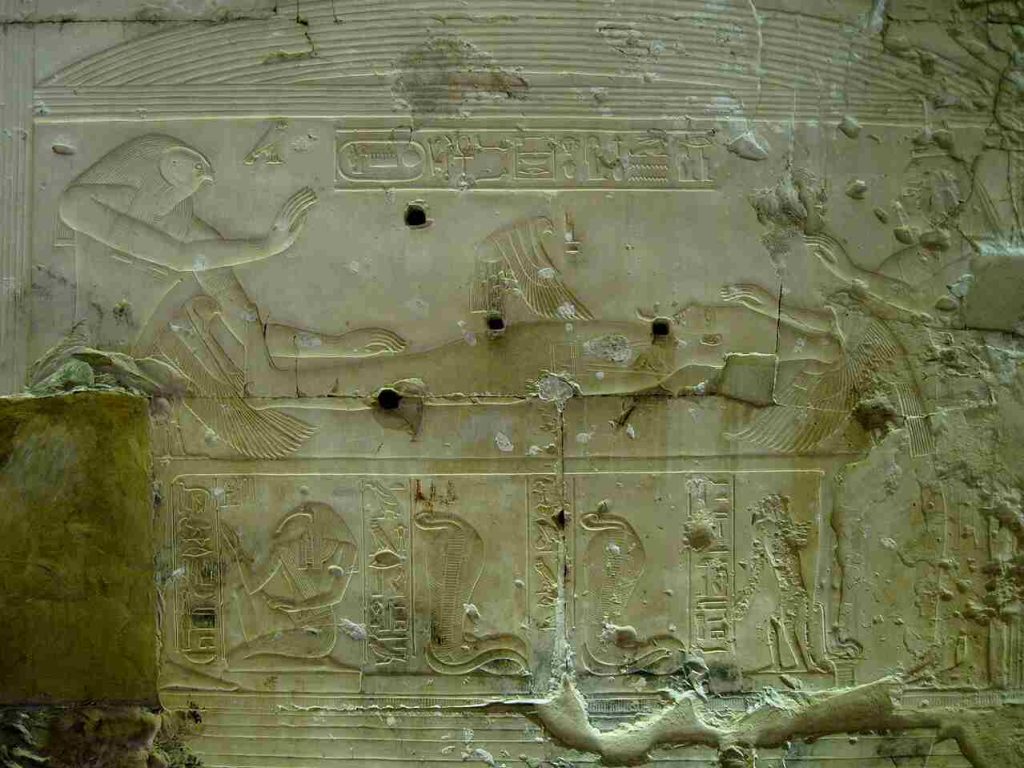
The Osiris Mysteries and Initiations
Another puzzling aspect of Osiris’s worship is the Osiris Mysteries, a set of religious rituals that were central to his cult. These mysteries, which were akin to the Eleusinian Mysteries in ancient Greece, involved a series of initiation rites that symbolized the death and resurrection of Osiris. Participants in these rites would undergo symbolic death and rebirth, mirroring the fate of Osiris and his eventual victory over death. However, the exact details of these rites remain largely unknown, as they were closely guarded secrets, passed down only to the initiated.
Osiris’s Symbolic and Theological Evolution
Osiris’s role and symbolism also evolved significantly over time, especially as Egypt transitioned from the Old Kingdom to later periods. Originally, Osiris was primarily a fertility god, associated with the growth of crops and the prosperity of the land. Over time, however, his role expanded to encompass the concepts of kingship, divine judgment, and the afterlife. This evolution raises questions about the cultural and theological shifts that influenced how the Egyptians viewed life, death, and the divine.
Theories and Speculation: Deciphering the Osiris Mysteries
Several theories have been proposed to explain the mysteries surrounding Osiris. One of the most debated topics is the nature of the Osiris Mysteries and their influence on later religious practices, particularly in the Greco-Roman world. Some scholars suggest that the Osiris Mysteries laid the groundwork for later mystery religions, such as the cult of Dionysus or the Mithraic Mysteries, which also involved themes of death and rebirth.
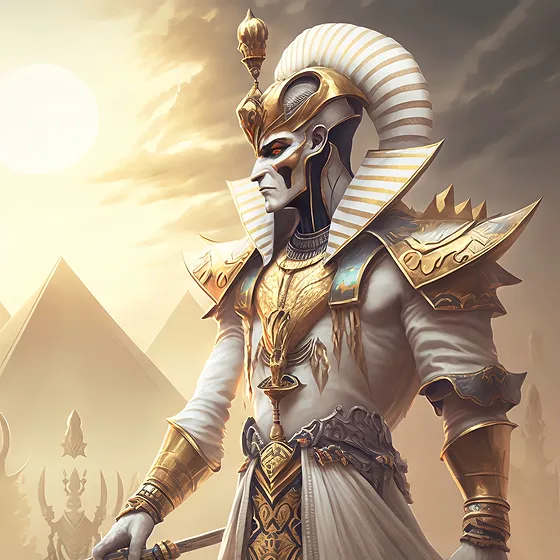
The Tomb of Osiris: Abydos or Elsewhere?
Regarding the tomb of Osiris, various locations have been suggested over the centuries. Abydos, long considered the epicenter of Osiris worship, contains several structures that were revered as the burial place of the god. The Osireion, an underground structure near the Temple of Seti I, is one such site. However, some Egyptologists argue that the Osireion was not a tomb but rather a cenotaph, a symbolic monument dedicated to Osiris. Other theories propose that the true tomb of Osiris might lie beneath the Great Pyramid of Giza or even in the uncharted desert sands.
Symbolic Interpretations and Mythological Syncretism
The Osiris myth has also been the subject of numerous symbolic interpretations. Some scholars view the story of Osiris as an allegory for the eternal cycle of nature—the death of the old year and the birth of the new. Osiris’s dismemberment and subsequent resurrection could symbolize the cutting and replanting of crops, a vital process in ancient agricultural societies.
Additionally, the widespread appeal of Osiris may have led to his syncretism with other deities. For instance, the Greek god Dionysus shares several attributes with Osiris, including associations with the afterlife, fertility, and wine. This syncretism raises intriguing questions about the cross-cultural exchanges and religious evolutions in the ancient Mediterranean world.
Psychological and Archetypal Theories
From a psychological perspective, some theorists, particularly those influenced by the work of Carl Jung, have interpreted Osiris as an archetypal figure representing the human psyche’s journey through death and rebirth. In this view, the myth of Osiris resonates with the universal human experience of confronting mortality and seeking meaning beyond death. Osiris’s resurrection, facilitated by Isis, could be seen as an archetype of transformation and renewal, reflecting the deep psychological processes that underlie religious and mythological narratives.
Frequently Asked Questions (FAQs)
1. What is Osiris the god of?
Osiris is the god of the afterlife, resurrection, and fertility in ancient Egyptian mythology. He is also associated with the annual flooding of the Nile, symbolizing renewal and growth.
2. Is Osiris good or bad?
Osiris is considered a benevolent deity who brought civilization, agriculture, and law to ancient Egypt. He represents order, justice, and life after death, making him a positive figure in Egyptian religion.
3. Who is Osiris in the Bible?
Osiris is not mentioned in the Bible, as he is a deity from Egyptian mythology. However, some scholars draw comparisons between Osiris and biblical figures or concepts related to death and resurrection, though these are speculative and not widely accepted in mainstream theology.
4. What killed Osiris?
Osiris was killed by his brother Seth, who tricked him into lying in a coffin, which Seth then sealed and threw into the Nile River. Later, Seth dismembered Osiris’s body into fourteen pieces and scattered them across Egypt.
5. What does Osiris look like?
Osiris is typically depicted as a mummified figure with green skin, symbolizing rebirth and regeneration. He is often shown wearing a tall white crown flanked by two ostrich feathers and holding a crook and flail, symbols of kingship and authority.
The Legacy of Osiris
The story of Osiris is more than just a tale of gods and kings—it is a profound reflection on life, death, and the possibility of life beyond death. Despite the extensive research and analysis devoted to Osiris, his mysteries continue to captivate and confound scholars, theologians, and enthusiasts alike.
The unanswered questions about his tomb, the nature of the Osiris Mysteries, and the symbolic meanings of his myth leave the door open for future discoveries and interpretations. As we continue to explore the ancient world and uncover its secrets, the figure of Osiris stands as a testament to the enduring power of myth and the human quest for understanding the mysteries of existence.
This article provides a comprehensive exploration of the ancient Egyptian god Osiris, blending historical facts with the mysteries that continue to surround this enigmatic deity. By understanding the role and symbolism of Osiris, we gain deeper insights into ancient Egyptian culture and their views on life, death, and the afterlife. The ongoing research and exploration into these areas suggest that the mysteries of Osiris, like many ancient legends, may one day be fully unraveled, offering new perspectives on human history and belief systems.
Use of Our Content
⚠️ Content on “Mystery Uncover” is protected under US and International Copyright Laws.
You are free to reuse, republish, and share our content by giving credit to the source as Mystery Uncover with a link to the original material on mysteryuncover.com.


